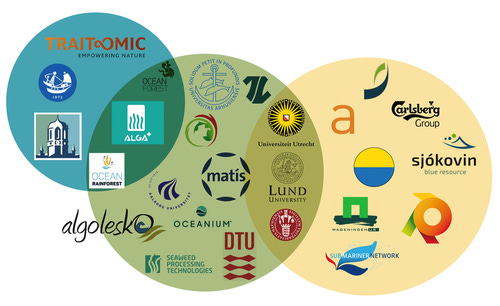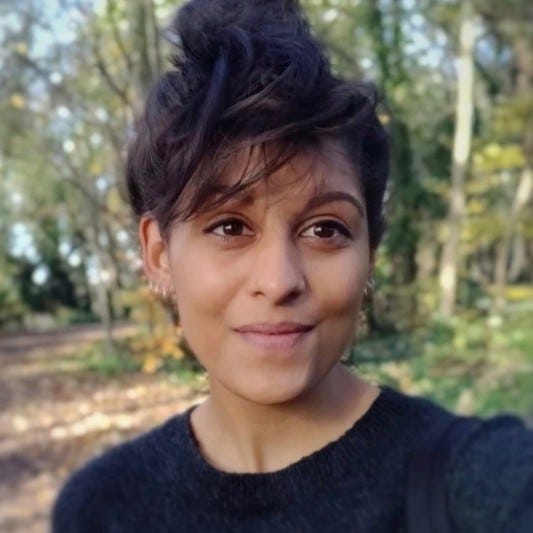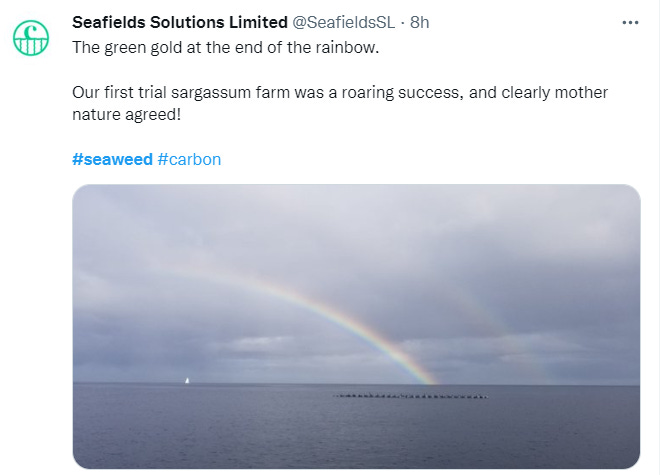🧚♀️$9.4M from the Horizon Tooth Fairy?
PLUS Volcanic Phytoplankton, Making Out Mozuku, and Alipay Ant Forest
“Remember to surround yourself with good, supportive people and make sure to have some fun” — Dr María Santos-Merino, MSU
Dear algae technologists,
Hello and welcome to The Paxtier Report for the period 08/06/22 - 15/06/22!
Did you know that the Hunga Tonga–Hunga Haʻapai volcanic eruption on 15th January 2022 produced the largest atmospheric explosion in recorded history?
And despite the ensuing destruction, some folks did a bad job of containing their glee…
Namely, phytoplankton.
To see what I mean, check out this chart showing Chlorophyll a distribution in the HTHH region over the last 20 years.
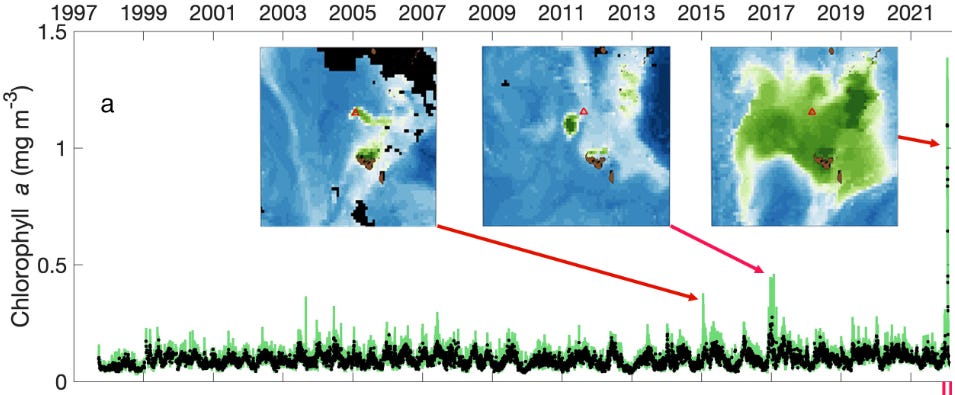
As you can see from the satellite data, a massive phytoplankton bloom took place during and after the eruption in 2022. This was caused by the volcano injecting an immense amount of fertilising nutrients into the water.
Read more HERE.
In today’s report:
Markets: SeaMark lands a whopping $9.4M
Chart: How does temperature disrupt seaweed cultivation?
Epic: The green gold at the end of the rainbow
Fireside chats: Engineering Chlamydomonas regulatory pathways with Kitty Clouston
Around the web: A look at 5G connected cameras monitoring kelp
Markets and Investing
⭐ SeaMark lands a whopping $9.4M from the Horizon Tooth Fairy
This week, the SeaMark initiative dominated headlines as Horizon Europe handed the project US$9.4M.
And man are they on a mission.
With this funding, the team hopes to upscale circular ocean seaweed cultivation, land-based integrated multi-trophic aquaculture (IMTA) systems and develop several innovative seaweed-based products.
Who’s involved in SeaMark and what’s the plan?
SeaMark stands for Seaweed-Based Market Applications, and is led by the company Ocean Rainforest alongside 25 international, cross-disciplinary partners:
According to reports, the project hopes to lay strong foundations for the growing European seaweed industry by focusing on the following themes:
Selective breeding, Cultivation, harvesting & pre-processing,
Biorefinery processing for bioactives, fibers & biomaterials,
Health promoting effects of fermented seaweed,
Co-extraction towards commodity & speciality ingredients,
Product application development,
Go-to-market strategies for products,
Techno-economic & socio-economic assessments,
Ecosystem Services & Life Cycle Assessment, and
Stakeholder outreach, training & strategic development.
Ultimately…
The team plans to develop 12 seaweed products (e.g bio-packaging materials, alternative proteins, and animal feeds) based mainly on cultivated sugar kelp (Saccharina latissima).
And some of the partner firms like “Fermentationexperts AS” are particularly bullish. For example, as the largest user of seaweed for animal feed in Europe, this company hopes the initiative will help increase its seaweed usage by 10x over the next 5 years. What’s more, on the human nutrition point of view, the company also plans to use SeaMark to develop several novel food products which are currently in their R&D pipeline.
But the real beauty in this collaboration is the overarching ambition. Because with some luck and a lot of hard work, the initiative could contribute significantly to the development of more resilient food systems in Europe, decrease our reliance on products made from fossil fuels, and helps us reach several United Nations Sustainable Development Goals (3, 8, 9, 12, 13 & 14).
✂️Algae Market Snippets
Some other big moves this week:
Kelp Forest Foundation has been selected out of 1,100 applications as a semi-finalist at the Solve - MIT Global Challenge. The foundation teamed up with reNature and Kelp Blue to design and implement a system applying cultivated kelp (macrocystis) biostimulants in regenerative agriculture. The substitution of chemical fertiliser with biostimulants will help improve the environmental and economic resilience of targeted farmers and their communities. (Read more HERE.)
Umaro revealed that their algae bacon will appear on the menu of:
Egg Shop (NYC) - The coveted breakfast and brunch neighbourhood spot.
D'Andrews Bakery & Cafe (Nashville, TN) - A modern bakery with a Southern sensibility.
Sorrel Restaurant (San Francisco, CA) - Michelin-starred restaurant led by chef Alex Hong. (Read more HERE)
Carbonwave made the news this week with their SargaExtra product, which became the first Sargassum-based fertilizer to be certified by Organic Materials Review Institute of the United States (OMRI). The team then followed this update by highlighting their new partnership with Bregaglio S.r.l. in Italy.
Alipay Ant Forest, a green initiative in the Alipay app that encourages users to make low-carbon lifestyle choices, introduced a new option for users to contribute to the restoration of coastal ecosystems. With this new feature, users can convert “green energy points” to grow virtual aquatic plants such as seaweed and eelgrass. Alipay Ant Forest matches these efforts by making donations to support coastal ecosystem restoration projects operated by environmental organizations. (Read more HERE).
Algiecel officially opened their pilot plant at Teknologisk Institut. They've developed a mobile photobioreactor, fitted into a standard shipping container, with which photosynthesizing microalgae allow the conversion of CO2 into biomass... (Read more HERE).
ULUU, the seaweed bioplastic start-up, won KPMG’s Nature Positive Challenge. The challenge supports Australia’s most impactful eco-startups. Prize money - $100k cash prize and pro bono, advisory services. “We are delighted to announce ULUU as the winner of the first ever KPMG Nature Positive Challenge,” said Andrew Yates CEO KPMG Australia. “ULUU stood out because of its unique application of synthetic biology to solve a massive environmental challenge: plastic. The judging panel was impressed by the science behind ULUU, and by the team’s approach to building a carbon negative supply chain with positive social and economic impacts.” (Read more HERE)
SPRIN-D announced their selection of C-Cause, a project partnership led by The Alfred Wegener Institute, Carbonwave, GEOMAR and Seafields, as one of five projects chosen for their ‘Carbon-to-Value' challenge. C-Cause (Chemical Carbon Utilization through Sargassum Economy) looks to reshape humanity’s carbon feedstock supply chain, by transforming Atlantic and Caribbean Sargassum into ethanol for plastics. The project aims to develop a proof of concept for open ocean Sargassum aquafarms, and optimise pathways to turn Sargassum biomass into ethanol for engineered plastics that will store CO2 long-term. Dr Mar Fernández-Méndez, Chief Scientific Officer of Seafields says “We are delighted to further our research into innovative solutions to increase carbon sequestration, which is critical, along with reducing emissions, to lower atmospheric CO2 levels. Sargassum has both a high carbon sequestration efficiency and fast growth rate, and as a floating macroalgae doesn’t need moored lines to grow like Kelp does, making it ideal for commercially scalable aquafarming geared at CDR.” (Read more HERE)
Veganz opens its own production for Salmon Style Slices: Early June saw Veganz Group AG open the doors to its second production site – this time in Neubrandenburg. From now on, it will be dedicated to the manufacture of Veganz Salmon Style Slices, a sustainable alternative to fish made from algae. (Read more HERE)
Mumbai-headquartered energy and telecom giant Reliance Industries (RIL) highlighted its efforts to make fuel using algae. The company's Instagram handle shared a 51-second-long video clip saying “Fuel from algae? You heard that right! Our scientists have developed cutting-edge innovative capabilities for algae strain development, cultivation, and harvesting." (Read more HERE).
New treatment targets Lake Anna algae blooms. This week, the Lake Anna Civic Association nears the launch of a pilot Cyanobacteria Mitigation Program, aimed at killing off harmful algae with a hydrogen peroxide-based treatment. The pilot program will use BlueGreen Water Technologies’ treatment, which the company’s website describes as “cutting-edge technologies to selectively target and eliminate harmful cyanobacteria/algae without harming other life forms or leaving any chemical trace in the water.” (Read more HERE).
Sanuk, a division of Deckers Brands (NYSE: DECK), today announced the sixth iteration of its ongoing collaboration with iconic rock band the Grateful Dead, powered by Warner Music Artist Services. The collection features a premium lineup of men's and women's summer styles made with natural, repurposed and recycled materials. For example, The Sanuk Avery Lace x GRATEFUL DEAD is an ultra-comfy packable women's sneaker made with sustainable materials like hemp and cotton, recycled polyester and high rebound BLOOM™ x Soft Top Foam insoles made from repurposed algae. (Read more HERE).
CH4 Global™, Inc., yesterday announced the first commercial sale and supply of its proprietary Asparagopsis-based product for ruminant animals to reduce agricultural emissions of methane. The initial sale is to CirPro, a leading Australian advanced protein manufacturer and meat processor, for use across its feedlot partners. CH4 Global's Australia and New Zealand operations will supply product formulated from Asparagopsis seaweed from both marine and tank cultivation. The long-term multi-million dollar commitment, with an option to further expand after the initial term, validates the company's global production capability and is a substantial step towards meeting its ambitious global growth plan. (Read more HERE).
In depth with Peter Green
💬 Community Fireside Chats: Kitty Clouston
Kitty Clouston is a research scientist interested in how we can engineer and apply biology to make industrial processes more sustainable.
After graduating from Imperial College in Biochemistry, she completed a research masters in the Plant Metabolism group at Cambridge University, and has since been involved in characterising new synthetic biology tools for microalgae in the Alison Smith lab.
Here’s a teaser from our recent chat, which covered Kitty’s microalgal journey, and advice for fellow researchers.
What did you get up to for your MSc?
For my Masters, I investigated several regulatory circuits in Chlamydomonas, and explored the role certain transgenes can play when producing valuable industrial chemicals.
To do this, I spent time engineering the chloroplast genome, which has certain benefits over modifying the nuclear genome. For example, if you're trying to integrate a transgene in the nucleus, homologous recombination makes it harder to control where the gene ends up.
But when modifying the chloroplast genome, you can design your transgene cassette to integrate at a very specific location.
What advice would you give to yourself just starting out in this space?
Things take time, particularly when you’re working with algae. And learning to slowdown was a really valuable lesson.
For example, by slowing down you can carefully consider how to design your experiments, which can save a whole lot of time down the line.
And when it comes to general advice, just remember that it's not all about brains. Being a good scientist involves mastering a lot of other skills like planning, communicating, and managing time.
📝Research Rundown: Making out Mozuku…
THE BIG IDEA
Can a simple PCR test improve the cultivation of seaweed?
Nishitsuji et al. sure think so, as outlined in their new paper presented in the journal of Phycological Research.
This scientific article describes how a PCR test helped identify nine genes in Okinawa mozuku algae which reveal the organism’s lifecycle stage, and sex.
Why does this matter?
Okinawa mozuku (Cladosiphon okamuranus) is a big part of the Japanese diet and every year around 15,000 to 20,000 tons of the seaweed is collected by local farmers.
But these seaweed farmers are under constant pressure as mozuku seeds fail to bud, plants detach themselves from lines, and rising ocean temperatures stunt the organism’s growth.
Dr. Koki Nishitsuji, a staff scientist in OIST's Marine Genomics Unit said this about the problem:
In 2010, the mozuku yield fell to less than half the level of a typical year (see chart below), which is thought to be due to an unusually warm winter. As climate change occurs, the frequency of warmer winters could increase, so new heat-resilient strains are needed.
📉Chart
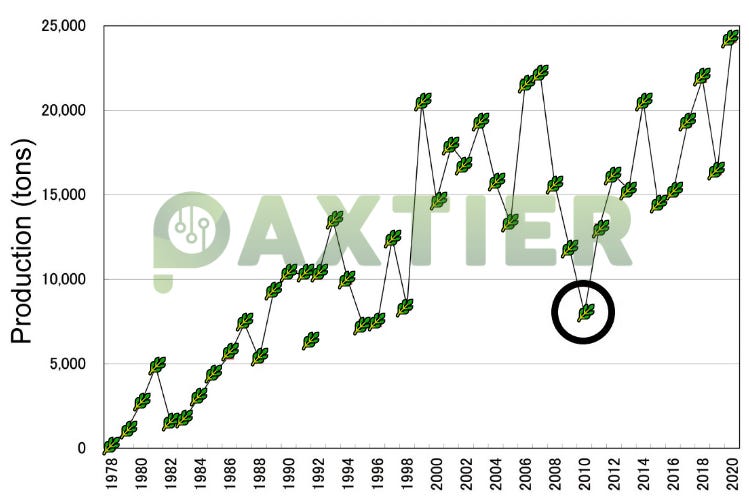
But these researchers have found a potential solution:
A simple PCR test.
Results
When cultivating mozuku, it’s important to note that only diploid germlings develop into the edible mature produce that the farmers want to harvest. But until now, differentiating between diploid and haploid germlings was somewhat difficult.
So, this is what Nishitsuji et al. set about fixing.
To do this, the team performed RNA-seq analysis of haploid germlings of C. okamuranus. And they identified 269 genes which are expressed specifically in male or female haploids. BLAST analysis with Ectocarpus siliculosus gene models then revealed that nine of 269 genes were putative sex determination-related genes of C. okamuranus. Thus, a unique set of polymerase chain reaction primers for these nine genes was designed.
The result?
A toolkit to identify and separate diploid germlings from haploid germlings, which can be used to increase crop productivity, allow the crossbreeding of organisms to create heat-tolerant strains, and permit the development of novel mozuku strains that attach more firmly to nets.
What’s particularly exciting about this work is that the sex-determining marker genes identified in this study are likely to be similar for other brown algae, like Undaria pinnatifida (wakame in Japanese) and Saccharina japonica (kombu), which are also economically important crops.
🔥 What else was hot in algae-tech this week?
Aliga Microalgae started their trials at DIL Deutsches Institut für Lebensmitteltechnik e. V. and were pleased to see how their white Chlorella ingredient adds to various plant-based food formulations. (Read more HERE).
Jacob von Manteuffel from BettaF!sh spoke to Tom Raftery at SAP for the Climate 21 podcast. He spoke about:🌊 The new regenerative economy - and how it's possible in the maritime industry.🐠 Why overfishing is a problem, and if 80% of all tuna ends up in cans it provides a major opportunity for disruption.💡 How they set up the right supply chains and built the right products from algae that fit into every day life
🐟 Why their plant-based tuna is made for people who love tuna, not for vegans. (Read more HERE)
(Paper) Geometric structure design of passive label-free microfluidic systems for biological micro-object separation: The team review the geometric innovations of several microfluidic schemes, including deterministic lateral displacement (DLD), inertial microfluidics (IMF), and viscoelastic microfluidics (VEM), before summarising the most creative innovations and design principles of passive and label-free microfluidics. (Nature)
5G connected underwater cameras capture seaweed growth in Dorset: The host buoy for this trial, named JET-3 Arial, was launched connected to a private 5G network provided by Wessex Internet, and transmitted a live video feed from under the water near Portland, Dorset to the JET team. Two cameras below the buoy streamed the live footage of seaweed at Jurassic Sea Farms, who have been supporting the aquaculture trials throughout 5G RuralDorset. (Read more HERE)
(Paper) Chemoautotrophy, symbiosis and sedimented diatoms support high biomass of benthic molluscs in the Namibian shelfs: This study highlights the importance of benthic-pelagic coupling that fosters the dietary base for macrozoobenthos in the OMZ. It further unveils that, in contrast to all shallow water lucinid symbionts, deeper water lucinid symbionts rely on ammonium assimilation rather than dinitrogen fixation to obtain nitrogen for growth.(Read more HERE)
Pembrokeshire farm’s seaweed burger gets Royal seal of approval: Her Royal Highness Princess Eugenie was full of praise for this team’s product last week while visiting their regenerative ocean farm near St. David’s. To celebrate World Ocean Day 2022, Princess Eugenie, an Ambassador of the Blue Marine Foundation, met the volunteer supported, community owned Câr-Y-Môr team. (Read more HERE)
The Franklin Templeton Institute released its latest insights paper, “Food innovation: Investing to feed our future,” focusing on the innovation and investments needed to feed a growing global population in the face of climate change and geopolitical conflict. (Read more HERE).
Can Synthetic Biology and Pond Scum Deliver Carbon-Neutral Manufacturing? In this interview, Provectus Algae explain how synthetic biology is being used in the manufacturing space, what makes algae so interesting (and challenging) as a vehicle for manufacturing, and how to avoid the pitfalls that led to a false start for algal synthetic biology. (Read more HERE).
Biotechnology company Zerocircle creates thin-film plastic alternatives out of the seaweed they source from coastal and fishing communities in India: This week Musings Magazine & Susan Rockefeller featured Zerocircle in this in-depth interview. (Read more HERE).
On World Oceans Day, ESP Advisors announces the introduction of the Don Young Veterans Advancing Conservation Act, a bill that aims to provide funding for nonprofit groups that “hire, retrain, and redeploy veterans to conduct coastal, Great Lakes, and underwater conservation missions.” (Read more HERE).
A little clip looking at the UTS team’s latest phenotyping system. This video explores their development of a Super Algae which removes carbon 40 times faster than trees (Read more HERE).
On World Oceans Day, Ocean Visions and Running Tide announced the formation of an independent Scientific Advisory Board convened and managed by Ocean Visions to guide the development of Running Tide's carbon removal system.
🐦Tweet of the week
That’s all folks!
Thanks again for joining us this week. Hope you have a great day and stay tuned for more algae tech updates soon!
Peter






